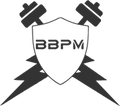Dynamic vs. Isometric Stretching: Know When to Move and When to Hold

In the world of high-performance training, every rep, every breath, every second matters. But what about the moments before and after the grind? The moments when you're not pushing, but preparing—or recovering?
That’s where stretching comes in.
And not all stretching is created equal. If you're aiming for transformation—not just in strength, but in discipline and durability—you need to understand when to move and when to hold.
Let’s break down dynamic stretching vs. isometric stretching, and more importantly, when to do each for maximum performance.
Dynamic Stretching: Movement That Primes the Machine
What it is:
Dynamic stretching involves active movements that take your joints and muscles through a full range of motion. Think: leg swings, arm circles, hip openers, controlled lunges.
When to do it:
Before the workout. Always.
Studies have shown that dynamic stretching improves power, speed, and overall performance when done prior to activity (Behm & Chaouachi, 2011). You’re waking up your nervous system, increasing blood flow, raising core temperature, and building mind-body connection.
Who it's for:
Everyone—from fighters hitting the pads to entrepreneurs hitting the stage. Dynamic movement gets your mind and muscles firing in sync.
BBPM Example:
Before a kickboxing session:
-
Leg swings
-
Torso twists
-
Dynamic lunges with rotation
-
Hip circles
You’re not just warming up—you’re programming precision, agility, and focus.
Pro Tip: Think of dynamic stretching as your body’s on switch. It’s not about relaxing—it's about preparing to dominate.
Isometric Stretching: Stillness That Builds Strength
What it is:
Isometric stretching involves holding a position under tension—like sitting in a deep split and contracting your muscles to maintain it. There’s no movement, but there’s plenty of activation.
When to do it:
After training or in focused recovery sessions.
Post-workout, your muscles are warm. This is when you can safely push deeper into flexibility and build resilience in your connective tissues. Research from the Journal of Strength and Conditioning Research supports isometric stretching for improving both flexibility and strength simultaneously (Youdas et al., 2010).
Who it's for:
High-performers who want more than mobility—they want bulletproof joints, greater range of motion, and stronger mind-muscle control.
BBPM Example:
After a heavy CrossFit session:
-
Isometric hamstring stretch (hold 30–60 sec)
-
Pigeon pose with glute activation
-
Seated straddle with quad engagement
Pro Tip: Isometric holds are where stillness meets grit. You’re not just increasing flexibility—you’re building mental and physical endurance under pressure.
Why It Matters: The Discipline of Preparation and Recovery
High-performers don’t just train hard—they train smart.
Understanding when to mobilize and when to stabilize is part of the mastery.
Dynamic prepares you to perform.
Isometric prepares you to evolve.
Neglecting either is like skipping the first chapter and the epilogue of your own story. You won’t get the full picture. You won’t build the legacy.
Bonus: Dynamic stretching has also been shown to reduce injury risk when performed consistently as part of a warm-up (McHugh & Cosgrave, 2010). And isometric protocols are being adopted more in elite rehab programs due to their ability to strengthen tendons and ligaments under low-impact conditions (Oranchuk et al., 2019).




Leave a comment